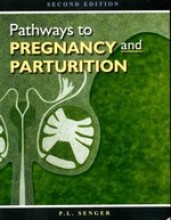Summary: Companion Animals Korte Samenvatting
- This + 400k other summaries
- A unique study and practice tool
- Never study anything twice again
- Get the grades you hope for
- 100% sure, 100% understanding
Read the summary and the most important questions on companion animals korte samenvatting
-
1 lecture 1 + 2
This is a preview. There are 20 more flashcards available for chapter 1
Show more cards here -
4 principle characteristics of domestication
- breeding is under human control
- provides a product/service useful to man
- is tame
- has been selected away from the wildtype -
What determines if an animal species adapts well to captivity?
- Boldness (bold vs timid/fearful)- timid species take flight quicker and show more stress responses if they cant escape
- specialists have difficulty coping with new environments and food supply
- when environment changes, they rather leave than adapt their behaviour
-
How do companion animals promote physical and mental health of humans?
1. Biophilia- the urge to affiliate with other forms of life
- looking at nature makes you more calm
- evolutionary -> if nature is calm, no predators around, also looking for food sources
- reduce loneliness and isolation
- lessen fear and reduce stress
- socializing effect -> person with dog more appealing to other people
-
secure base effect
- if the owner is around the dog feels more relaxed -
2 lecture 3
This is a preview. There are 10 more flashcards available for chapter 2
Show more cards here -
Dog family tree
- fox-like canids
- south american canids
- wolf-like (canis) canids -
Canis lupus L. (grey wolf)
- genetically closest to the dog, interbreed and produce fertile offspring
- still regularly crossbreed in nature -
Origin of dog domestication
- East Asia -> Yangtze river (also 1ste settlement for humans)
- Middle East -> small dogs come partly from middle eastern wolf
- Europe -> initiated with hunter-gatheres -
Animal model for domestication
- conventional genetic theory- random mutations cannot explain the variability accumulated at immense rate
- change in behaviour
- change in appearance -> adrenalin + melanin are connected
- went really fast
-
Comparison wolves and dogs
- behaviour- similarity in behaviour -> 71/90 behaviours found in wolves are also found in dogs
- dogs have less hunting behaviour
- but there is NO reduced agression in dogs!
-
Dogs bred and kept by humans
- are limited in:- space/ exercise
- social contacts
- mental
stimulation - physical performance
- insufficient / no
fulfillment ofbehavioural need - unsuccessful coping and boredom
- Higher grades + faster learning
- Never study anything twice
- 100% sure, 100% understanding






























